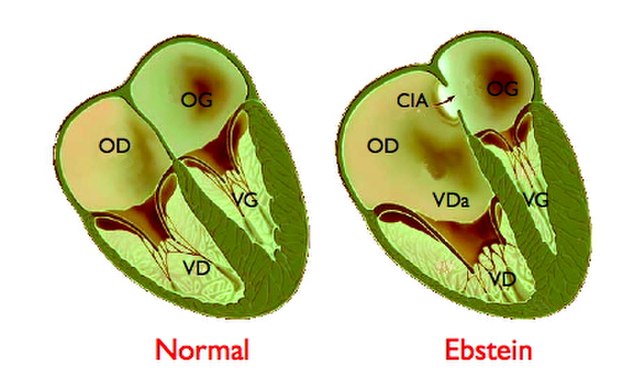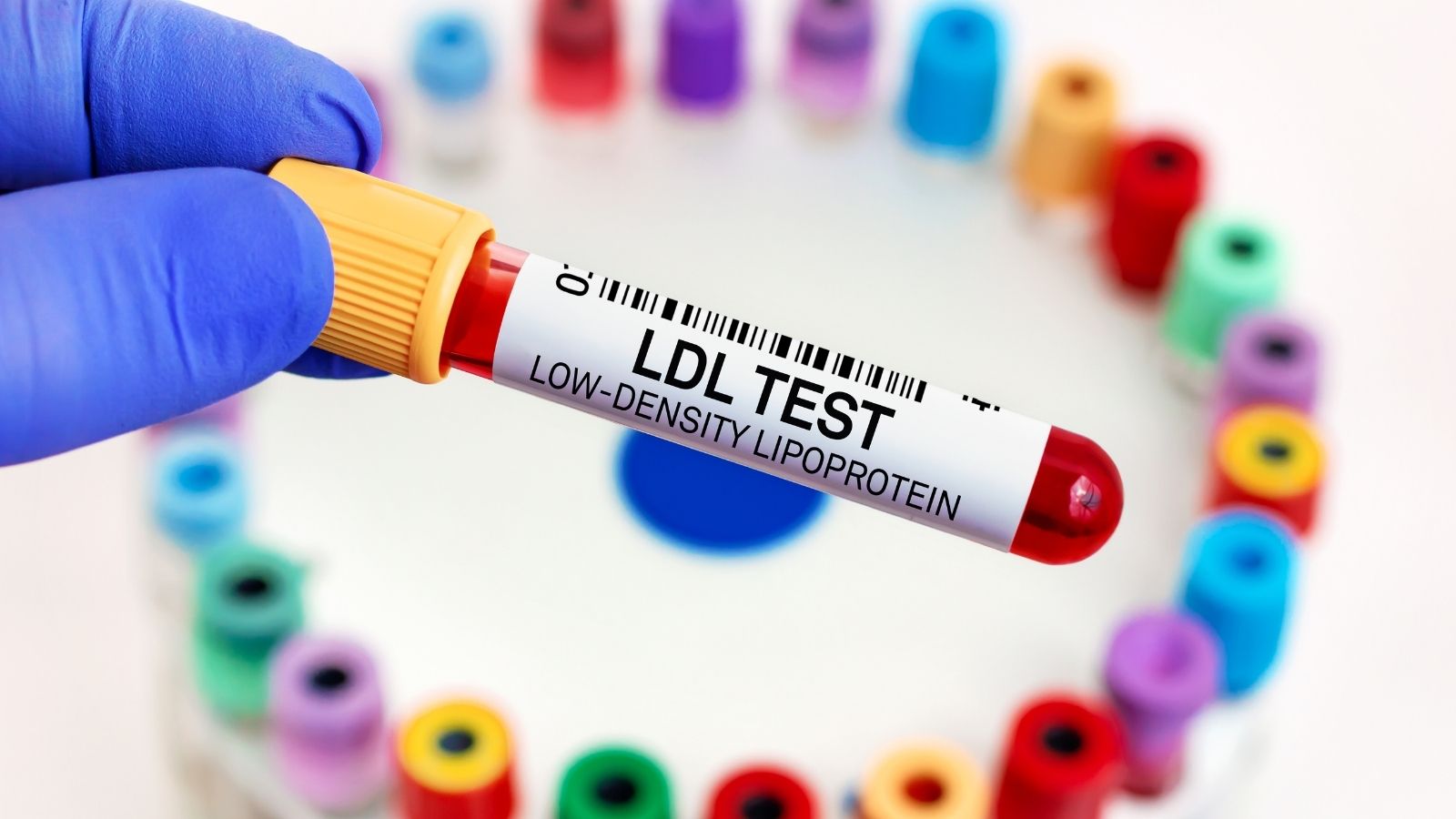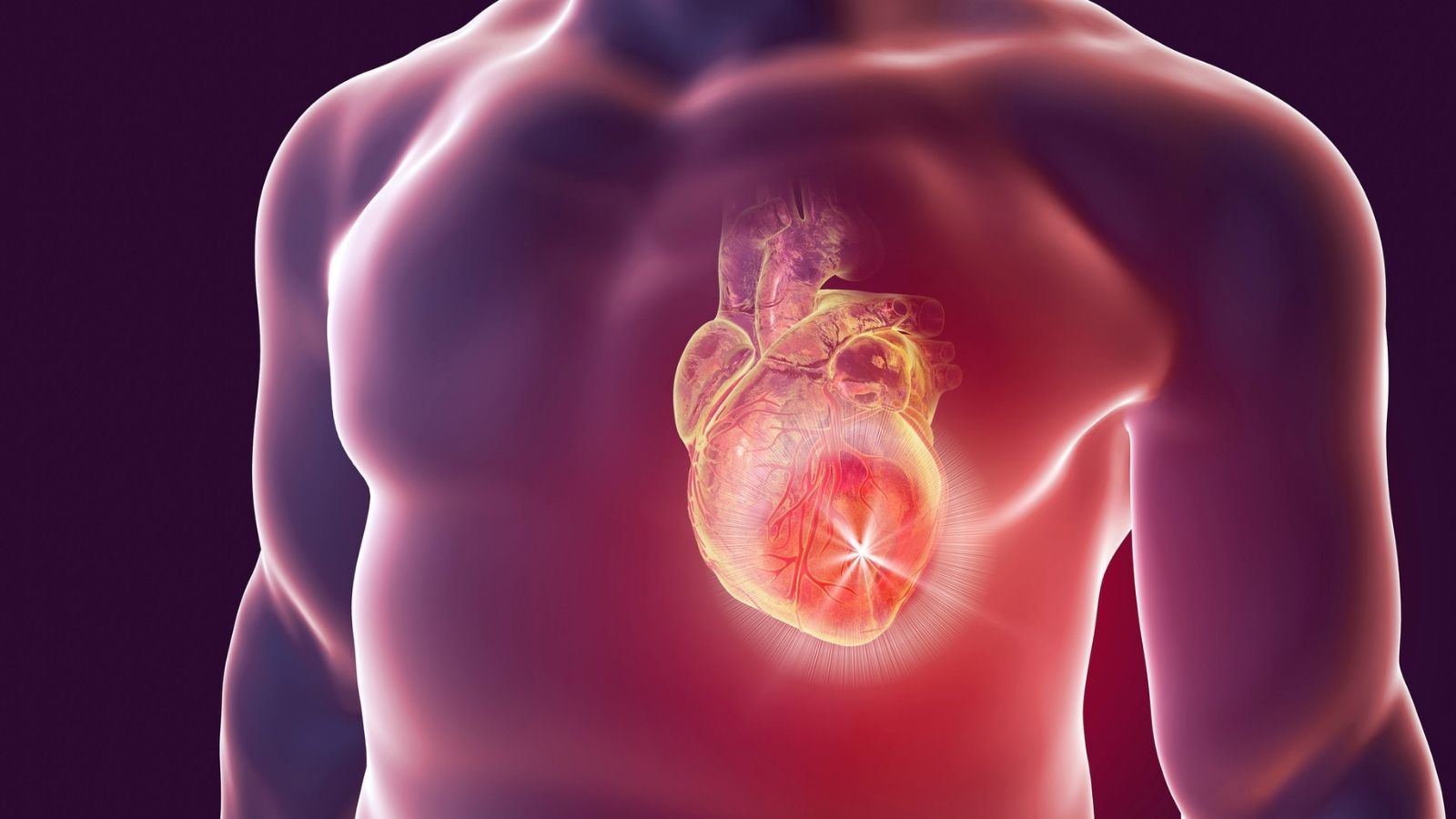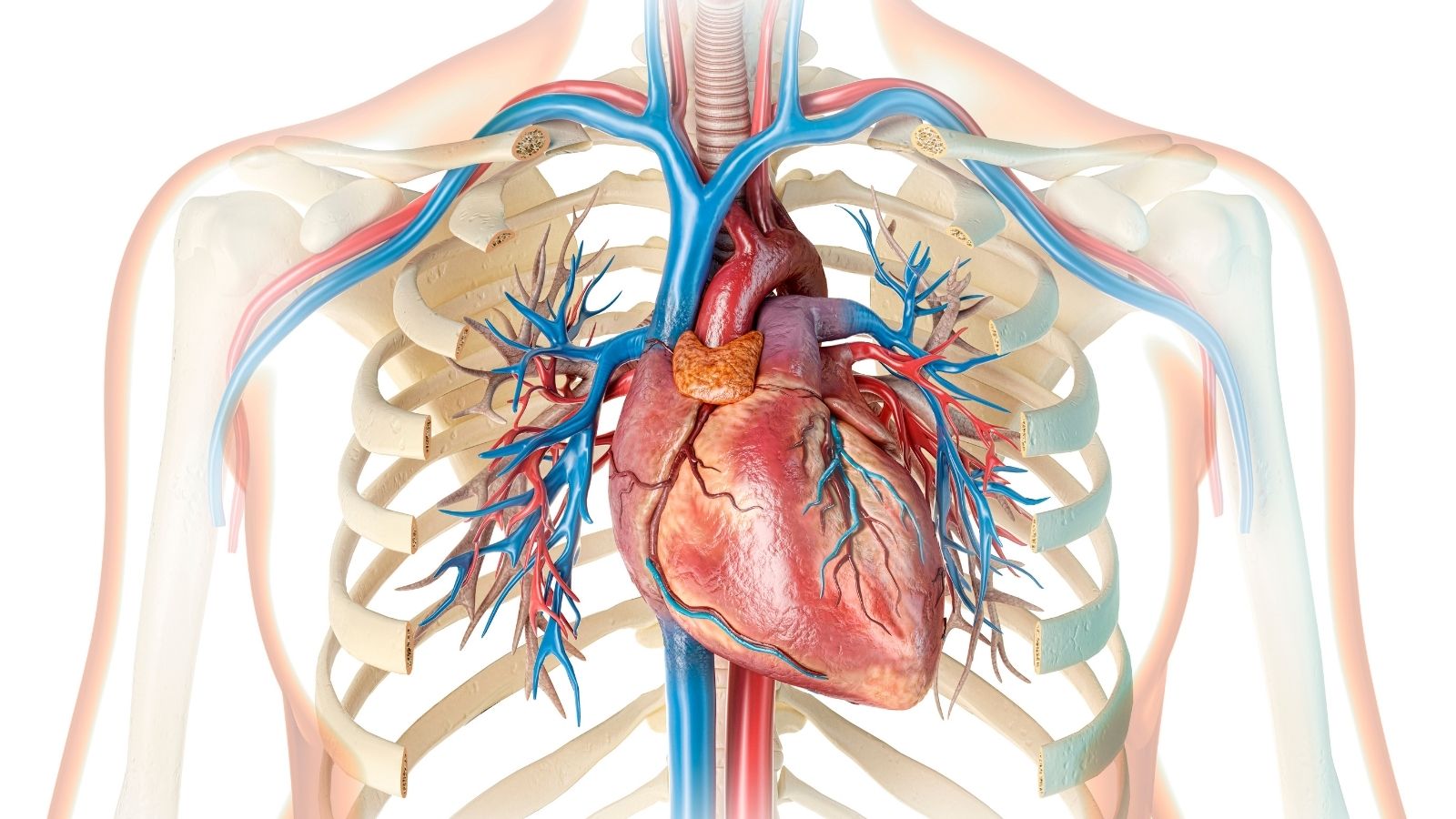Ebstein anomalisi, triküspit kapağın doğuştan yapısal bozukluğu ile karakterize nadir bir kalp hastalığıdır. Bu durumda triküspit kapak yaprakçıkları normalden aşağıda, sağ karıncığa doğru yerleşmiştir ve kapak tam olarak kapanamaz.
Kapağın anormal konumu nedeniyle sağ kulakçık genişler, sağ karıncık küçülür ve kanın geriye kaçışı (triküspit yetmezliği) oluşur. Bu durum, kalbin pompalama verimini düşürür ve zamanla sağ kalp yetmezliğine yol açabilir.
Belirtiler hafif formda yok denecek kadar az olabilirken, ileri vakalarda morarma, nefes darlığı, çarpıntı, yorgunluk ve bacaklarda şişlik görülebilir. Bazı hastalarda ritim bozuklukları da gelişebilir.
Tanı, ekokardiyografi ile konur; ileri inceleme olarak manyetik rezonans görüntüleme veya kateterizasyon gerekebilir. Tedavi, hastalığın şiddetine göre ilaç tedavisi, ritim düzenleyici girişimler veya triküspit kapak onarımı/değişimini içerebilir.
| Tanım | Triküspit kapakçığın doğuştan anormal yerleşimi ve yapısal bozukluğu nedeniyle sağ kalp odacıklarının etkilenmesiyle karakterize doğumsal bir kalp hastalığı |
| Nedenler | Doğuştan gelişimsel bozukluk; genellikle nedeni kesin bilinmez, nadiren genetik veya çevresel faktörler |
| Risk Faktörleri | Doğuştan kalp hastalığı öyküsü, annenin gebelik sırasında lityum kullanımı, genetik yatkınlık |
| Belirtiler | Morarma (siyanoz), nefes darlığı, çarpıntı, yorgunluk, çabuk yorulma, büyüme-gelişme geriliği, aritmi, bayılma |
| Tanı Yöntemleri | Ekokardiyografi (en önemli tanı yöntemi), EKG, akciğer grafisi, kardiyak MR, kardiyak kateterizasyon |
| Tedavi Yöntemleri | Takip (hafif olgularda), ilaç tedavisi (kalp yetmezliği ve aritmi için), cerrahi (triküspit kapak tamiri veya değişimi), ileri vakalarda kalp nakli |
| Komplikasyonlar | Kalp yetmezliği, ciddi ritim bozuklukları, ani kalp durması, büyüme-gelişme geriliği, emboli |
| Önleme Yöntemleri | Spesifik önleme yoktur; riskli gebelerde ilaç kullanımına dikkat, doğumsal kalp hastalıklarında erken tanı ve takip |

Prof. Dr. Yavuz Beşoğul
>Turkey’s Cardiovascular Surgery Doctor
Ebstein Anomalisi Nedir?
Ebstein anomalisi, kalpte triküspit kapağın yapısal bozukluğuyla karakterize doğuştan bir kalp hastalığıdır. Bu durumda triküspit kapak normalden aşağıda yerleşir ve sağ kulakçık ile sağ karıncık arasındaki sınır bozulur. Sonuç olarak sağ kulakçık büyür, sağ karıncığın pompalama gücü azalır ve kan dolaşımı bozulur. Belirtiler arasında morarma, çarpıntı, nefes darlığı, yorgunluk ve ritim bozuklukları bulunur. Tedavi hastalığın şiddetine göre ilaç, kateter yöntemleri veya cerrahi girişimle yapılabilir.
Ebstein anomalisi kalbi nasıl etkiler?
- Ebstein Anomalisi diyagramı
Kalbimizi dört odacıklı bir ev gibi hayal edelim. Bu evin sağ tarafındaki iki oda, vücutta kullanılmış, oksijeni azalmış kanı toplayıp temizlenmesi için akciğerlere göndermekle görevlidir. Sağ üstteki oda (sağ kulakçık) kanı toplar ve bu kanın, tek yöne açılan bir kapıdan (triküspit kapak) geçerek sağ alttaki pompa odasına (sağ karıncık) dolması gerekir. Bu kapının görevi, kanın sadece ileriye, yani pompa odasına geçmesini sağlamak ve geri kaçmasını önlemektir.
İşte Ebstein anomalisinde temel sorun bu kapıdadır. Triküspit kapak, olması gereken doğru yere değil daha aşağıya, pompa odasının (sağ karıncık) içine doğru hatalı bir şekilde monte edilmiş gibidir. Dahası, kapıyı oluşturan yaprakçıklar genellikle tam gelişmemiş, kalınlaşmış ve esnekliğini kaybetmiştir.
Bu hatalı yerleşim ve yapı yüzünden kapı kapanamaz. Pompa odası (sağ karıncık) kanı akciğerlere göndermek için güçlü bir şekilde kasıldığında, kanın bir kısmı ileri gitmek yerine, tam kapanamayan bu kapıdan geriye, kanın toplandığı sağ kulakçığa doğru sızar. Biz bu duruma “triküspit yetersizliği” veya “regürjitasyon” diyoruz.
Bu durum kalbin çalışma düzenini zamanla bozar. Sürekli geriye kan kaçtığı için sağ kulakçık genişler ve yorulur. Daha da önemlisi, kapağın aşağı kaymasıyla, normalde güçlü bir pompa olması gereken sağ karıncığın bir kısmı, işlevini yitirir ve adeta sağ kulakçığın bir uzantısı gibi davranan ince duvarlı, tembel bir keseye dönüşür. Bu işlevsiz bölüme “atriyalize (kulakçıklaşmış) sağ ventrikül” diyoruz. Bu bölüm etkili bir kasılma yapamadığı için, kalbin asıl pompa gücü azalır. Akciğerlere kanı pompalayan etkili sağ karıncık kısmı ise normalden daha küçük kalır ve çok daha ağır bir yük altında çalışmak zorunda kalır.
Ebstein anomalisi ile birlikte başka kalp sorunları görülür mü?
Evet, Ebstein anomalisi olan bireylerde sıklıkla başka kalp sorunları da tabloya eşlik eder. Bu durum tedaviyi planlarken göz önünde bulundurduğumuz önemli bir faktördür. En sık karşılaştığımız ek sorun, kalbin sağ ve sol üst odacıkları (kulakçıklar) arasındaki duvarda bir delik olmasıdır. Bu duruma eşlik edebilecek başlıca sorunlar şunlardır:
- Atriyal septal defekt (ASD)
- Patent foramen ovale (PFO)
- Kalp ritim bozuklukları (aritmiler)
- Wolff-Parkinson-White (WPW) sendromu
- Pulmoner kapak darlığı (pulmoner stenoz)
- Pulmoner kapak yokluğu (pulmoner atrezi)
Bu delikler (ASD veya PFO), oksijeni azalmış kanın bir kısmının, kalbin sol tarafındaki temiz kanla karışmasına neden olabilir. Bu da vücuda daha az oksijenli kan gitmesine ve özellikle bebeklerde ciltte morarmaya (siyanoz) yol açar. Kalp ritim bozuklukları (aritmiler) ise Ebstein anomalisinde oldukça yaygındır ve çarpıntı, baş dönmesi gibi şikayetlere neden olabilir. Wolff-Parkinson-White (WPW) sendromu, kalpte fazladan bir elektrik yolu bulunması durumudur ve ciddi ritim sorunlarını tetikleyebilir. Bazen bu sorunların yanında, nadir de olsa total pulmoner venöz dönüş anomalisi gibi daha karmaşık tablolar da görülebilir. Eşlik eden bu sorunların varlığı, özellikle cerrahi planlaması sırasında bütüncül bir yaklaşımla ele alınmalarını gerektirir.
Ebstein anomalisi neden olur ve endişelenmeli miyim?
Bu ebeveynlerin en çok sorduğu ve endişelendiği sorulardan biridir. Şunu en başta ve net bir şekilde belirtmek gerekir: Ebstein anomalisinin kesin nedeni çoğu vakada bilinmemektedir ve bu durum sizin veya eşinizin yaptığı ya da yapmadığı bir şeyden kaynaklanmaz. Bu hamileliğin çok erken dönemlerinde, kalp gelişirken meydana gelen ve genellikle önceden tahmin edilemeyen veya engellenemeyen bir olaydır.
Araştırmalar, genetik ve çevresel faktörlerin bir kombinasyonunun rol oynayabileceğini düşündürse de ortada net bir sebep-sonuç ilişkisi yoktur. Ailede başka birinde doğumsal kalp hastalığı olması riski bir miktar artırabilir, ancak bu hastalığın doğrudan ebeveynden çocuğa geçtiği anlamına gelmez. Bu sadece genetik bir yatkınlığın olabileceğine işaret eder.
Geçmişte bazı ilaçların, özellikle bipolar bozukluk tedavisinde kullanılan lityumun hamilelikte kullanımı ile Ebstein anomalisi arasında zayıf bir bağlantı kurulmuştur. Ancak bu o kadar nadir bir durumdur ki bu ilacı kullanan annelerin ezici çoğunluğunun bebekleri sağlıklı doğar. Bu tür maddeler “doğrudan neden” değil sadece olasılığı çok küçük bir oranda artırabilen “risk faktörleri” olarak kabul edilir.
Ebstein anomalisi ne gibi belirtilere yol açar?
Ebstein anomalisinin belirtileri, hastalığın şiddetine bağlı olarak o kadar değişkendir ki bazı insanlar ileri yetişkinlik dönemine kadar hiçbir şey fark etmeyebilirken, bazı bebekler doğumdan hemen sonra ciddi belirtiler gösterebilir. Bu geniş yelpaze, bazen tanının neden geciktiğini veya bir kişinin neden “yıllarca bir sorun yaşamadım da şimdi ortaya çıktı?” diye sorduğunu açıklar.
Belirtiler genellikle yaşa göre farklılık gösterir. Yenidoğan ve bebeklik dönemindeki başlıca belirtiler şunlar olabilir:
- Dudaklarda, dilde ve tırnaklarda morarma (siyanoz)
- Sık ve zorlu nefes alma
- Beslenirken çabuk yorulma
- Yeterli kilo alamama
- Vücutta, özellikle bacaklarda şişlik
- Doktor muayenesinde duyulan üfürüm.
Hastalığın daha hafif formlarında ise belirtiler çocukluk veya yetişkinlik döneminde ortaya çıkabilir. Bu dönemdeki sık görülen şikayetler ise şöyledir:
- Eforla artan yorgunluk ve halsizlik
- Merdiven çıkarken veya koşarken nefes nefese kalma
- Kalbin düzensiz, hızlı veya “tekleme” şeklinde atması (çarpıntı)
- Efor sırasında beliren veya kötüleşen morarma
- Bacaklarda veya karında şişlik (ödem)
- Nadiren göğüs ağrısı
- Nadiren baş dönmesi veya bayılma.
Ebstein anomalisi tanısı için hangi testler yapılır?
Doğru bir tanı koymak ve hastalığın ciddiyetini net bir şekilde anlamak, en uygun tedavi yolunu çizmemiz için hayati önem taşır. Bu nedenle sadece tanıyı doğrulamakla kalmayıp, kalbinizin detaylı bir haritasını çıkarmak için bir dizi testten faydalanırız. Bu süreçte kullanılan başlıca tanı yöntemleri şunlardır.
Ekokardiyografi (EKO): Bu test, Ebstein anomalisi tanısında bizim altın standardımızdır. Ses dalgaları kullanan bir ultrason yöntemidir. Ağrısızdır ve bize kalbinizin hareketli görüntülerini verir. Bu sayede triküspit kapağın nerede olduğunu, yaprakçıklarının ne durumda olduğunu ne kadar kan kaçırdığını ve kalp odacıklarının boyutlarını net bir şekilde görürüz.
Elektrokardiyogram (EKG): Kalbin elektriksel aktivitesini kaydeden bu basit test, ritim bozukluklarını veya kalbin sağ tarafındaki büyümeye bağlı değişiklikleri saptamamıza yardımcı olur.
Göğüs Röntgeni: Bize kalbin genel boyutu ve şekli hakkında hızlı bir fikir verir. Genellikle Ebstein anomalisinde kalp gölgesi normalden büyük görünür.
Kardiyak Manyetik Rezonans (Kardiyak MR): Bu ileri görüntüleme tekniği, özellikle sağ karıncığın hacmi, kas yapısı ve fonksiyonları hakkında EKO’dan bile daha detaylı, üç boyutlu bilgiler sağlar. Cerrahi planlamasında sıkça başvurduğumuz bir yöntemdir.
Efor Testi: Bir koşu bandında veya bisiklette egzersiz yaparken kalbinizin nasıl tepki verdiğini, efor kapasitenizi ve egzersizle ortaya çıkan bir ritim bozukluğu olup olmadığını değerlendiririz.
Holter Monitörü: Bu 24 veya 48 saat boyunca üzerinizde taşıdığınız küçük bir EKG cihazıdır. Günlük yaşamınız sırasında ortaya çıkan ancak kısa süreli EKG’de yakalanamayan ritim bozukluklarını tespit etmek için çok değerlidir.
Ebstein anomalisi hangi ciddi sorunlara (komplikasyonlara) yol açabilir?
Ebstein anomalisi, özellikle ilerlemiş vakalarda ve tedavi edilmediğinde, kalbin çalışma düzenini bozarak bir dizi ciddi soruna neden olabilir. Bu riskleri bilmek, düzenli takibin ve zamanında müdahalenin neden bu kadar önemli olduğunu anlamamıza yardımcı olur. Olası başlıca komplikasyonlar şunlardır:
- Kalp yetmezliği
- Ritim bozuklukları (aritmiler)
- İnme (paradoksal emboli)
- Ani kardiyak ölüm
- Siyanoz (morarma)
- Egzersiz kapasitesinde düşüş
- Beyin apsesi (çok nadir)
- Kalp kapak iltihabı (enfektif endokardit)
Bunlardan en sık görülenleri kalp yetmezliği ve ritim bozukluklarıdır. Kalp yetmezliği, yorulan ve verimsiz çalışan kalbin artık vücudun ihtiyaçlarını karşılayamaması durumudur. Ritim bozuklukları ise çarpıntıdan bayılmaya kadar giden şikayetlere yol açabilir ve kalp yetmezliğini daha da kötüleştirebilir. Kalpteki bir delikten (ASD) kaynaklanabilen inme riski ve kontrolsüz aritmilere bağlı ani kardiyak ölüm riski ise nadir olmakla birlikte bu durumun ciddiye alınması gerektiğini gösteren en önemli komplikasyonlardır. Düzenli takip ve modern tedavi yöntemleriyle bu riskler yönetilebilir ve önemli ölçüde azaltılabilir.
Ebstein anomalisi için ameliyatsız tedavi seçenekleri var mıdır?
Evet, özellikle belirtisi olmayan veya çok hafif şikayetleri olan hastalar için ameliyatsız tedavi yöntemleri mevcuttur. Bu tedavilerin amacı hastalığı “yok etmek” değil belirtileri yönetmek, kalbin iş yükünü azaltmak ve ciddi komplikasyonları önlemektir.
Düzenli Gözlem ve Takip: Bu en sık başvurduğumuz yaklaşımdır. Ancak bu pasif bir “bekle ve gör” süreci değildir. Aksine, düzenli kontrollerle (genellikle yılda bir kez EKO ve EKG ile) kalbin durumunu aktif olarak izlediğimiz, olası bir kötüleşmeyi çok erken bir evrede saptayarak cerrahi gibi daha ileri tedaviler için en doğru zamanı belirlemeye çalıştığımız proaktif bir süreçtir.
İlaç Tedavisi: Belirtileri kontrol etmek ve komplikasyonları tedavi etmek için çeşitli ilaç gruplarından faydalanırız. Başlıca kullandığımız ilaç grupları şunlardır:
- Diüretikler (idrar söktürücüler)
- Anti-aritmik ilaçlar
- Antikoagülanlar (kan sulandırıcılar)
- Beta blokerler
- Digoksin
Bu ilaçlar, kalp yetmezliği belirtilerini hafifletmek, ritim bozukluklarını kontrol altında tutmak veya inme riskini azaltmak gibi hedeflere yönelik olarak kişiye özel bir şekilde reçete edilir.
Kateter Ablasyonu: Bu ameliyatsız bir ritim bozukluğu tedavi yöntemidir. Özellikle ilaçlara yanıt vermeyen veya WPW sendromu gibi altta yatan belirli bir elektrik yoluna bağlı ritim bozuklukları olan hastalarda kullanılır. Kasıktan ince bir telle (kateter) kalbe girilerek ritim bozukluğuna neden olan anormal odak bulunur ve ısı veya dondurma enerjisiyle etkisiz hale getirilir.
Ebstein anomalisi ameliyatı ne zaman ve kimler için gereklidir?
Ameliyat kararı, hayat kalitesini düşüren belirtiler kalbin giderek büyümesi veya fonksiyonlarının bozulması gibi objektif bulgular ortaya çıktığında verilir. Bu karar, her hasta için ayrı ayrı, pek çok faktör göz önünde bulundurularak alınır. Ameliyat için en doğru zamanı belirlemek, tedavinin başarısındaki en kritik adımlardan biridir. Ameliyat gerektiren başlıca durumlar şunlardır:
- Günlük yaşamı kısıtlayan ve ilaçla kontrol edilemeyen belirtiler (nefes darlığı, yorgunluk)
- İlerleyici kalp yetmezliği bulguları
- Efor testlerinde saptanan, egzersiz kapasitesinde ilerleyici düşüş
- EKO veya MR’da görülen, kalp boyutlarında (özellikle sağ kalp) sürekli artış
- İstirahat veya hafif eforla ortaya çıkan morarma (siyanoz)
- Daha önce inme veya beyne pıhtı atması öyküsü
- İlaç veya ablasyona yanıt vermeyen, hayatı tehdit eden ritim bozuklukları
Bazen, henüz ciddi belirtileri olmasa da testlerde kalbinde “sessiz bir ilerleme” saptanan hastalara, kalpte geri dönüşümsüz hasar oluşmadan önce proaktif olarak ameliyat önerebiliriz. Özellikle çocuklarda, kalbin daha fazla bozulmasını önlemek amacıyla erken yaşlarda yapılacak başarılı bir tamir, uzun dönem sonuçları çok daha iyi hale getirebilir.
Ebstein anomalisi cerrahisinde hangi ameliyat yöntemleri uygulanır?
Ebstein anomalisi cerrahisinde amacımız, öncelikli olarak hastanın kendi kapak dokusunu koruyarak, anormal yapıyı mümkün olan en normal ve işlevsel hale getirmektir. Bu felsefeyle geliştirilen ve günümüzde “altın standart” olarak kabul edilen yöntem Kon (Cone) Prosedürü’dür.
Kon (Cone) Prosedürü: Bu Ebstein anomalisinin karmaşık anatomisini üç boyutlu olarak düzelten, son derece ustalık gerektiren bir tamir tekniğidir. Ameliyat sırasında, yerinden kaymış ve yapışmış olan kapak yaprakçıkları, bir heykeltıraşın titizliğiyle kalp kasından serbestleştirilir. Daha sonra bu serbestleşen kapak dokuları, olması gereken doğru anatomik seviyeye çekilir ve bir “külah” veya “huni” (İngilizce: cone) oluşturacak şekilde yeniden bir araya getirilerek dikilir. Bu sayede hastanın tamamen kendi dokusundan, sızıntı yapmayan, fonksiyonel yeni bir kapak oluşturulur. Kon prosedürünün en büyük avantajı, protez kapak kullanımını ortadan kaldırması ve özellikle çocuklarda tamir edilen kapağın çocukla birlikte büyüme potansiyeline sahip olmasıdır. Bu gelecekte tekrar ameliyat olma ihtiyacını önemli ölçüde azaltır.
Triküspit Kapak Değişimi: Eğer hastanın kendi kapak dokusu, ileri derecede hasarlı olduğu için tamire uygun değilse veya daha önceki tamir denemeleri başarısız olduysa, kapak değişimi bir seçenektir. Bu durumda hastalıklı kapak çıkarılır ve yerine bir protez kapak (biyolojik veya mekanik) takılır. Ancak bu yöntem protez kapakların zamanla yıpranması veya ömür boyu kan sulandırıcı ilaç gerektirmesi gibi potansiyel dezavantajları nedeniyle, tamirin mümkün olmadığı durumlarla sınırlandırılmalıdır. Kon prosedürünün yaygınlaşmasıyla kapak değişimi ihtiyacı önemli ölçüde azalmıştır.
Ameliyat sırasında, eğer varsa kulakçıklar arası delik (ASD) de mutlaka kapatılır ve gerekli görülen hastalarda ritim bozukluklarına yönelik cerrahi ablasyon (Maze prosedürü) gibi ek işlemler de aynı seansta yapılarak, tek bir ameliyatla tüm sorunların çözülmesi hedeflenir.
Ebstein anomalisi ameliyatı sonrası süreç ve uzun dönem takip nasıl işler?
Başarılı bir ameliyat sonrası, hastaların yaşam kalitesinde genellikle çarpıcı bir iyileşme görülür. Ancak bu tedavinin bittiği anlamına gelmez. Aksine, ömür boyu sürecek düzenli bir takibin başlangıcıdır.
Ameliyat sonrası iyileşme döneminde dikkat edilmesi gereken bazı noktalar vardır:
- Ağrı kontrolü
- Yara bakımı
- Kademeli olarak aktiviteye dönüş
- Ağır kaldırmaktan kaçınma (ilk 6-8 hafta)
- İlaçların düzenli kullanımı
Hastaneden taburcu olduktan sonraki hayatınızda ise, doğumsal kalp hastalıkları konusunda uzmanlaşmış bir kardiyolog tarafından ömür boyu takip edilmeniz şarttır. Bu takipler, genellikle yılda bir kez yapılır ve şu amaçları güder:
- Ameliyat edilen kapağın fonksiyonunu değerlendirmek
- Kalp boyutlarını ve fonksiyonlarını izlemek
- Yeni ritim bozuklukları gelişip gelişmediğini kontrol etmek
- Genel sağlık durumunuzu ve yaşam kalitenizi korumak
Bu düzenli takipler, olası sorunları çok erken bir evrede saptamamızı ve proaktif bir şekilde müdahale etmemizi sağlar. Bu uzun ve sağlıklı bir yaşam sürmenin en önemli güvencesidir.
Ebstein anomalisi ile sağlıklı bir yaşam sürmek mümkün mü?
Kesinlikle evet. Bu sorunun cevabı, son yıllardaki tıbbi ve cerrahi gelişmeler sayesinde her zamankinden daha olumludur. Ebstein anomalisi ciddi ve ömür boyu takip gerektiren bir durum olsa da hastaların büyük bir çoğunluğu, doğru zamanda yapılan doğru tedavilerle aktif, üretken ve mutlu bir yaşam sürebilir.
Hastalığın hafif formları olan bazı kişiler neredeyse hiç kısıtlama olmadan yaşayabilirler. Ciddi vakalarda ise, özellikle Kon prosedürü gibi başarılı bir ameliyat sonrası, hastalar spora dönebilir, okula veya işe gidebilir, evlenebilir ve aile kurabilirler.
Burada kilit nokta, durumuyla barışık, bilinçli bir yaşam tarzı benimsemektir. Bu şu anlama gelir:
- Doktor kontrollerini asla aksatmamak
- İlaçları düzenli kullanmak
- Egzersiz programını mutlaka doktora danışarak belirlemek
- Kalp sağlığına uygun beslenmek (tuzu azaltmak gibi)
- Gebelik gibi önemli yaşam kararlarını mutlaka kardiyolog ve ilgili diğer uzmanlarla planlayarak almak
- Vücudunuzdan gelen sinyallere (yorgunluk, çarpıntı gibi) karşı duyarlı olmak
Ebstein anomalisi ile yaşam bir yolculuktur ve bu yolculukta, uzman hekimlerden oluşan ekibiniz her zaman sizin yanınızda olacaktır. Modern tıp, bu nadir durumda bile hastaların uzun ve kaliteli bir yaşam sürmesi için güçlü olanaklar sunmaktadır.
Sıkça Sorulan Sorular
Ebstein anomalisi nedir?
Doğuştan gelen nadir bir kalp hastalığıdır. Triküspit kapak normalden daha aşağıda yer alır ve kalbin sağ tarafında yapısal bozukluklara neden olur.
Bu hastalık ne zaman ortaya çıkar?
Doğumla birlikte mevcuttur; bazı vakalar doğumda fark edilirken bazıları ileri yaşlarda belirti verir.
Ebstein anomalisi belirtileri nelerdir?
Morarma (siyanoz), çabuk yorulma, nefes darlığı, çarpıntı, bayılma ve gelişim geriliği görülebilir.
Hangi kapak etkilenir?
Sağ kulakçık ile sağ karıncık arasındaki triküspit kapak etkilenir.
Bu hastalık neden olur?
Kesin nedeni bilinmez; ancak genetik faktörler ve bazı gebelik dönemi etkiler rol oynayabilir.
Nasıl teşhis edilir?
Ekokardiyografi (EKO), elektrokardiyografi (EKG), göğüs röntgeni ve bazı durumlarda kardiyak MR ile teşhis edilir.
Ebstein anomalisi her zaman belirti verir mi?
Hayır, hafif formları belirti vermeyebilir ve tesadüfen saptanabilir.
Hastalığın ciddiyeti kişiden kişiye değişir mi?
Evet, triküspit kapağın yerleşim şekline ve sağ kalp fonksiyonuna göre hafif ila ağır arasında değişebilir.
Cerrahi tedavi gerekir mi?
Ağır semptomları olan hastalarda triküspit kapak tamiri veya değişimi gibi cerrahi tedaviler gerekebilir.
Kateterle tedavi mümkün mü?
Bazı ritim bozukluklarında kateter ablasyon tedavisi uygulanabilir; ancak kapak düzeltmesi için cerrahi gerekir.
Bu hastalık kalp ritmini etkiler mi?
Evet, kalpte ritim bozuklukları sık görülür. Özellikle Wolff-Parkinson-White (WPW) sendromu eşlik edebilir.
Hamilelikte Ebstein anomalisi riskli midir?
Evet, hamilelik süreci dikkatli izlenmelidir; kalp yetersizliği riski artabilir.
Yaşam beklentisi nasıldır?
Erken teşhis ve uygun tedavi ile yaşam beklentisi oldukça iyidir. Hafif formlar yaşamı fazla etkilemez.
Egzersiz yapılabilir mi?
Hafif formlarda uygun düzeyde egzersiz mümkündür. Ciddi vakalarda doktor önerisine göre hareket edilmelidir.

Prof. Dr. Yavuz Beşoğul graduated from Erciyes University Faculty of Medicine in 1989 and completed his specialization in Cardiovascular Surgery in 1996. Between 1997 and 2012, he served at Eskişehir Osmangazi University Faculty of Medicine as Assistant Professor, Associate Professor, and Professor, respectively. Prof. Dr. Beşoğul, one of the pioneers of minimally invasive cardiovascular surgery in Türkiye, has specialized in closed-heart surgeries, underarm heart valve surgery, beating-heart bypass, and peripheral vascular surgery. He worked at Florence Nightingale Kızıltoprak Hospital between 2012–2014, Medicana Çamlıca Hospital between 2014–2017, and İstinye University (Medical Park) Hospital between 2017–2023. With over 100 publications and one book chapter, Prof. Dr. Beşoğul has contributed significantly to the medical literature and is known for his minimally invasive approaches that prioritize patient safety and rapid recovery.









